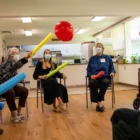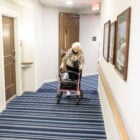Money in Politics
New Mexico In Depth editors chat about the state budget, public safety, and transparency
|
New Mexico In Depth editors held the first of five online chats about the 2024 legislative session yesterday. In a wide-ranging conversation, Executive Director Trip Jennings and Managing Editor Marjorie Childress covered the highlights of the first week, including Gov. Michelle Lujan Grisham’s State of the State address which was disrupted by young protestors on three different occasions. New Mexico In Depth will host weekly conversations each Thursday at 12:30 during the 30-day legislative session that kicked off on Tuesday.
Jennings and Childress, with 30 years or more combined reporting at the Roundhouse, discussed the competing state budget proposals from Lujan Grisham and the Legislature at a time when New Mexico is swimming in money thanks to a historic surplus. A theme of the coming budget discussions between the governor and state lawmakers will center on how much to spend and how much to save, they said. New Mexico relies heavily on the volatile oil and gas industry to pay for services and programs, with more than 40% of the state’s spending every year underwritten by revenues generated by the industry.









